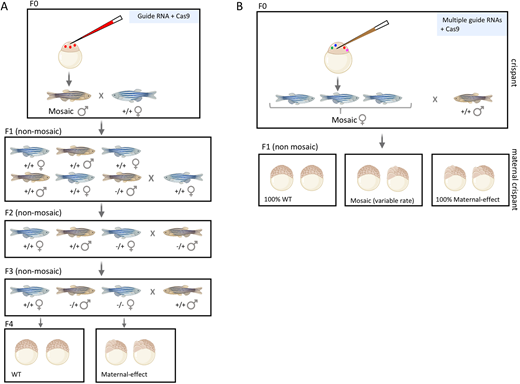Fig. 1 Maternal crispants can be used to efficiently identify maternal-effect genes in zebrafish in a single generation. (A) The traditional workflow for CRISPR-Cas9 in zebrafish uses one guide RNA that is co-injected with Cas9 mRNA or protein into the one-cell embryo to target a specific gene of interest. Successful targeting will result in adults with a mosaic germ line. To isolate these alleles, non-mosaic F1 fish are generated by crossing the F0 CRISPR-injected fish with a wild-type fish, then screening for heterozygous carriers of indels. Outcrossing followed by incrossing results in female homozygous mutants for a maternal-effect gene, phenotypes of which can be assessed in their offspring. (B) The maternal crispant technique generates maternal-effect phenotypes in a single generation. This strategy multiplexes four guide RNAs to target a single gene, thus increasing the rate of biallelic editing. If this biallelic editing event occurs in the germ line, the F1 offspring of F0 CRISPR-injected females have the potential to display a maternal-effect phenotype.
Image
Figure Caption
Acknowledgments
This image is the copyrighted work of the attributed author or publisher, and
ZFIN has permission only to display this image to its users.
Additional permissions should be obtained from the applicable author or publisher of the image.
Full text @ Development

